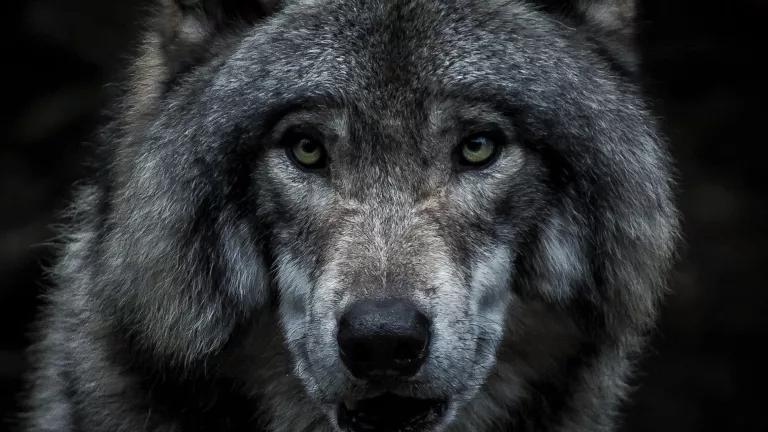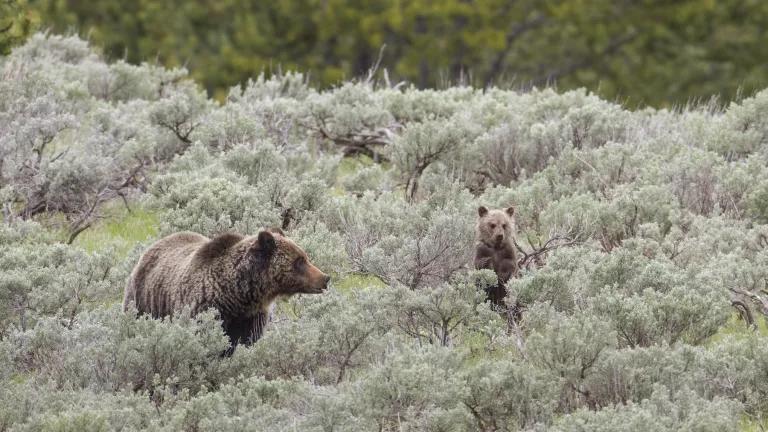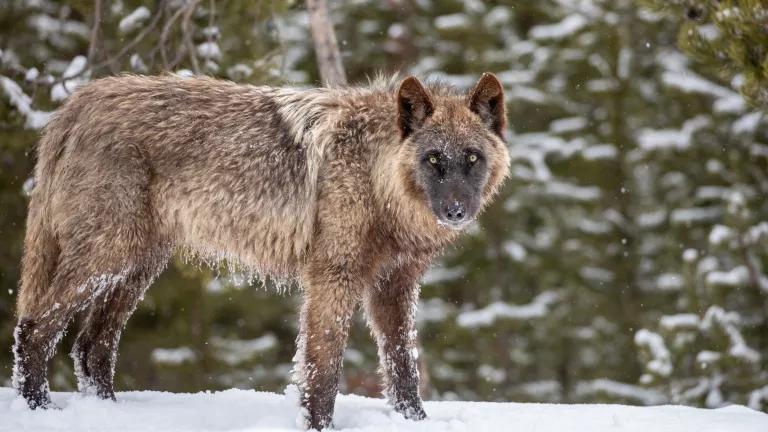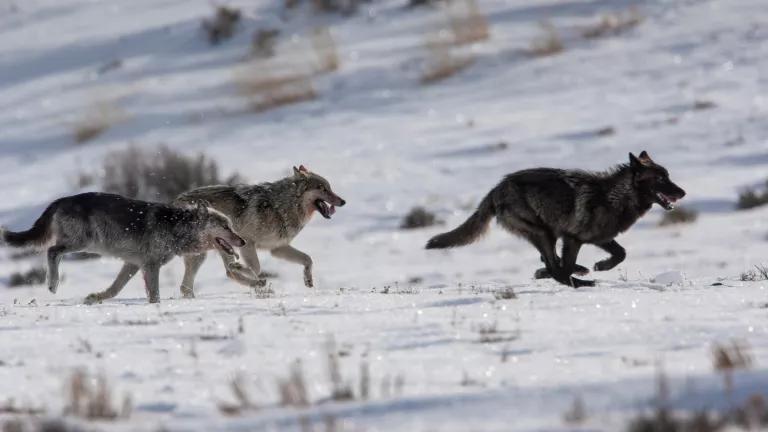Killing More Montana Wolves—to What End?
The main thrust of Montana’s recent wolf-killing fervor is the fallacy that fewer wolves equates to more elk and greater elk hunter opportunity.

Photo by Marc-Olivier Jodoin on Unsplash.
Update: On August 25th, the Fish and Wildlife Commission voted to combine the two wolf hunting and trapping units just north of Yellowstone and to implement a quota of 6 wolves in that area. This is a small step in the right direction to protect Yellowstone's wolves and all of the benefits they bring to diverse communities inside and outside of the state. We will continue advocating to bring Montana's wolf management approach further in line with the lessons of modern ecology and the views of modern society.
Once again, the future of Montana’s wolves rests in the hands of Montana’s wildlife commissioners as they consider a new proposal for the upcoming wolf hunting and trapping season. In 2021, this Commission allowed extreme measures reminiscent of the predator extermination campaigns a century ago, including the use of strangulating neck snares, hunting at night using high-powered technology, luring wolves in with bait, extending trapping seasons, and increased “bag limits” that allow an individual to hunt and trap up to 20 wolves. A bill that was signed into law in 2021 also allows monetary compensation for killing wolves—effectively a bounty. Many Montanans are bewildered as to why such aggressive measures are needed and who really benefits. When bias and politics override objective reasoning in wildlife management decisions, wolves become easy targets, the public pays the price, and ecological integrity is eroded without biological or social justification.
The main thrust of Montana’s recent wolf-killing fervor is the fallacy that fewer wolves equates to more elk and greater elk hunter opportunity. In fact, there is scant scientific evidence to support this belief, and there is widespread evidence that the recreational killing of wolves will not have the intended effect. Wildlife dynamics and ecosystems are far too complex for such simplistic calculations. Wolves, abundant elk, and high elk hunter success rates are successfully co-occurring in the Northern Rockies states today. Elk population numbers are higher than before wolves were reintroduced to the region, and elk hunter success rates show no declining trend—they remain higher than many states that have few or no wolves, such as Colorado.
In the few places in Montana where local elk populations are declining, factors such as habitat availability, weather, and human hunting pressure are likely more influential than wolves. But Montana politicians have overlooked these topics, turning instead to confront wolves as a convenient scapegoat. The resulting decisions cater to the interests of small but extreme special interest groups who are invested in killing wolves, while ignoring the views of the more moderate majority. Public comments on wolf seasons in Montana have consistently and overwhelmingly been in favor of a more moderate approach.

Photo by Dick Hoskins on Pexels.
In one of its most controversial decisions last year, the Commission moved to eliminate a quota system that had long restricted how many wolves could be killed by hunters and trappers in the area just north of Yellowstone National Park. This decision was a change that broke with over a decade of strictly limiting the killing of wolves in this area in order to protect the interests of diverse Montanans—including those who value wolves alive and benefit from the unique opportunities to view them in the wild. Recent economic data helps put into perspective the tradeoffs the Commission must consider between providing a handful of hunters and trappers the opportunity to kill Yellowstone wolves, versus the many thousands of Montanans and millions of visitors to the region that benefit from wolves remaining alive on the landscape.
Yellowstone is considered the best place in the world to observe wolves in the wild, and this has infused local economies with significant tourism-related benefits since wolf reintroduction. An economics study released in June 2022 found that wildlife watching tourism contributes significantly to Montana’s economy. Key findings include:
- Wolf-specific tourism brings in at least $82 million per year to the communities that surround the park.
- Over $236 million was spent in Park County (north of Yellowstone) in 2019 by out-of-state travelers, and wildlife watching is one of the key drivers of the industry.
- Visitors to Montana participate in wildlife watching more than most other activities—such as fishing, rafting, backpacking, or hunting. Participation in and expenditures related to wildlife watching have grown significantly compared to fishing and hunting.

Tourists watching wolves in Yellowstone National Park.
Photo by Larry Lamsa on Wikimedia Commons.
In response to a record number of wolves (21) killed just north of Yellowstone last season, over 150 local businesses in Southwest Montana formed the Wild Livelihoods Business Coalition to advocate for more sustainable stewardship of the environment, recognizing that their livelihoods are intertwined with the survival of wildlife and wild places. The toll recreational hunting and trapping had on park wolves was wildly outsized and unprecedented since wolf reintroduction, resulting in 20% of the park’s wolf population being killed in the surrounding states last season. The business coalition is advocating the Montana Fish and Wildlife Commission consider the needs and values of local businesses and communities, and to restore a limited quota of 1-2 wolves to the area—similar to the established quota numbers from previous years.

Photo by Luemen Rutkowski on Unsplash.
Designing policies to allow and incentivize aggressive wolf killing is stoking the flames of controversy and conflict in the state, with no clear justification or demonstrable outcomes. On the other hand, allowing science, evidence and reason to drive wolf management decisions will inevitably result in a more moderate approach—thereby helping to restore a sense of balance, trust and democracy to state wildlife management. The Commission should take this opportunity to correct its course from last season before Montana’s reputation for world-class wildlife opportunities and conservation leadership further deteriorates.



